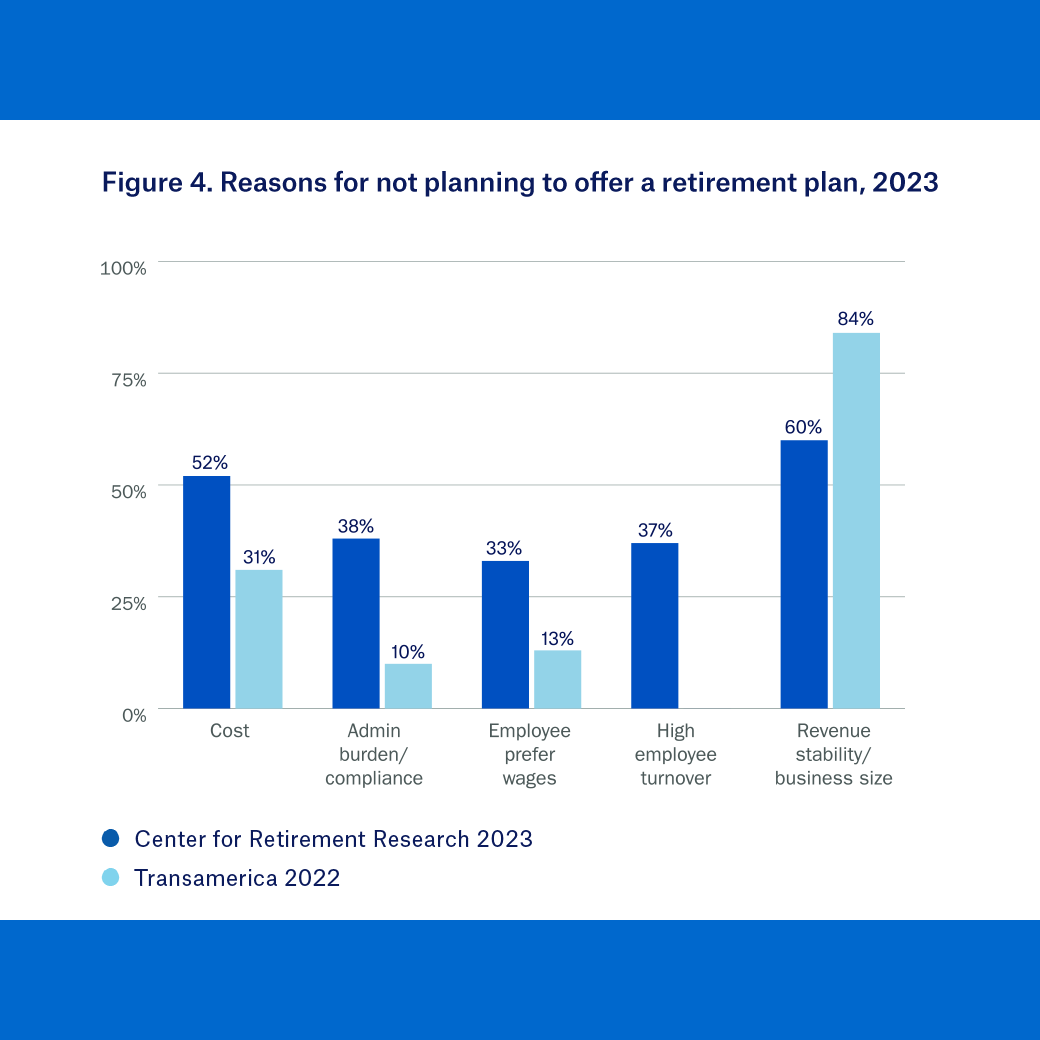Only about half of U.S. private sector workers are covered by an employer-sponsored retirement plan. As a result, roughly one-third of households rely exclusively on Social Security at retirement.
Summary
Small employers, defined here as those with fewer than 100 employees, account for the vast majority of U.S. businesses and employ 35% of private sector workers. However, only about half of small employers offer a retirement plan, compared to about 90% of employers with more than 100 workers. In an effort to lower retirement plan costs for small employers, and thereby reduce the coverage gap, the SECURE Act of 2019 made Multiple Employer Plans (MEPs) less restrictive and potentially more attractive. This report explores the possibilities and limitations of MEPs in increasing plan participation.
Key Insights
- The SECURE Act created Pooled Employer Plans (PEPs), a subclass of MEPs requiring fewer administrative and fiduciary responsibilities, but small employers may be slow to join PEPs due to lack of familiarity.
- PEPs are advertised as being cheaper than stand-alone plans, but it’s not clear if they actually will be. Historically, the PEP parent, the MEP, has been more expensive than single-employer plans.
- Growth in the number of MEP and PEP providers since 2019 could introduce greater competition and help reduce costs going forward.



